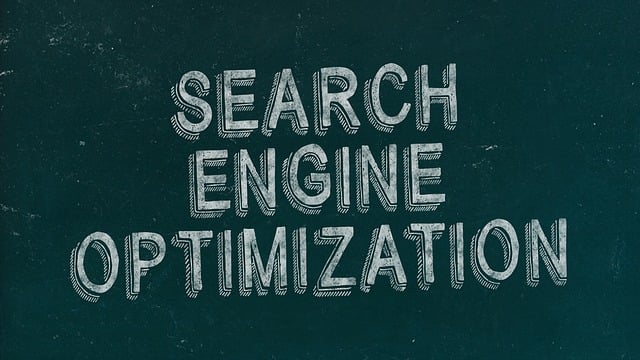AI Voice Recognition Systems have transformed business operations by enabling seamless customer communication and optimizing internal processes through NLP and deep learning. These systems convert spoken words into text, analyze context, and determine intent in real-time, powering applications like automated customer service and efficient dictation. AI visual analytics for menu design is a leading example, enhancing user experiences with intuitive interfaces and providing businesses with valuable data insights to improve services, staff training, and decision-making based on customer feedback and trends. By leveraging advanced algorithms, AI visual analytics optimizes the dining journey, from initial eye contact to final choices, increasing customer satisfaction and sales. Implementing AI-powered voice recognition requires identifying key tasks for improvement, selecting a suitable AI platform, integrating AI visual analytics for menus, and continuously improving models based on relevant data.
“Unleash the power of voice interaction with AI business voice recognition systems—the future of customer engagement. This comprehensive guide explores how these innovative tools revolutionize daily operations, from streamlining orders in restaurants to enhancing accessibility in retail.
We delve into the mechanics behind voice recognition, highlighting its benefits and transforming how businesses interact with customers. Furthermore, discover the synergistic role of AI visual analytics in optimizing menu design, making dining experiences more engaging. Get ready to explore a step-by-step implementation guide, empowering your business to embrace this cutting-edge technology.”
- Understanding AI Business Voice Recognition Systems: How They Work and Their Benefits
- The Role of AI Visual Analytics in Optimizing Menu Design for Restaurants and Retail
- Implementing AI-Powered Voice Recognition: A Step-by-Step Guide for Businesses
Understanding AI Business Voice Recognition Systems: How They Work and Their Benefits

AI Business Voice Recognition Systems have transformed the way businesses interact with their customers and streamline internal processes. These systems leverage advanced natural language processing (NLP) algorithms and deep learning techniques to interpret human speech accurately. When a user speaks, the system captures audio data, converts it into text through speech-to-text transcription, and then analyzes this text for context and intent. This real-time interaction enables various applications, from automated customer service and voice-based ordering systems in restaurants to efficient dictation and document management within organizations.
One of the significant advantages of AI Voice Recognition is its potential to enhance user experiences through intuitive interfaces. For instance, an AI visual analytics tool can be integrated into menu design for eateries, allowing customers to simply speak their order preferences. This not only reduces ordering time but also minimizes errors, ensuring faster service and happier patrons. Moreover, businesses benefit from data insights gathered during interactions, enabling them to improve services, train staff, and make informed decisions based on customer feedback and trends.
The Role of AI Visual Analytics in Optimizing Menu Design for Restaurants and Retail

In the realm of dining and retail, AI visual analytics is revolutionizing menu design, offering a game-changer approach to enhancing customer experiences. By leveraging advanced algorithms, this technology provides insights into consumer behavior and preferences, allowing businesses to create visually appealing and effective menus. AI can analyze vast amounts of data, including past sales records, popular items, and customer feedback, to identify trends and make informed decisions about menu layout and content.
This process optimizes the entire dining journey from the moment patrons lay eyes on the menu. With AI-driven analytics, restaurant and retail owners can strategically organize menu items, use eye-catching visuals, and provide concise descriptions, ensuring customers can quickly navigate and make choices. This not only improves customer satisfaction but also boosts sales by encouraging orders based on visual appeal and easy accessibility of information.
Implementing AI-Powered Voice Recognition: A Step-by-Step Guide for Businesses

Implementing AI-Powered Voice Recognition: A Practical Guide for Businesses
The first step in integrating AI business voice recognition systems is to define your goals and use cases. Identify specific tasks where voice recognition can streamline operations, enhance customer experience, or increase efficiency. For instance, it could be used for automating call center queries, dictation in healthcare settings, or voice-based menu navigation in restaurants. Once defined, prioritize these use cases based on their potential impact and feasibility.
Next, select the right AI platform that offers robust voice recognition capabilities and complementary visual analytics tools. Consider platforms that can handle various languages, accents, and noise levels to ensure accurate performance across diverse user bases. Additionally, look for solutions integrating AI visual analytics for menu design or other user interfaces, enhancing overall usability and intuitiveness. With the right technology in place, businesses can then train and fine-tune their voice models using relevant data, ensuring precise recognition and continuous improvement.
AI voice recognition systems and AI visual analytics are powerful tools that can significantly enhance customer experiences in businesses, from improving order accuracy in restaurants to optimizing menu designs. By understanding how these technologies work and implementing them strategically, businesses can streamline operations, increase efficiency, and deliver personalized services. The integration of AI visual analytics for menu design, in particular, offers a unique advantage in the competitive market, allowing businesses to cater to customers’ preferences more effectively.
